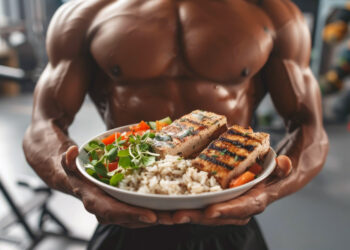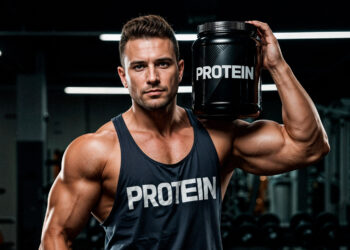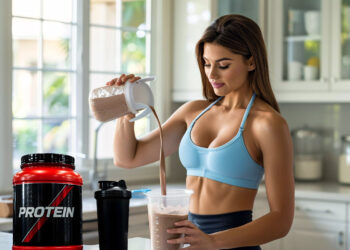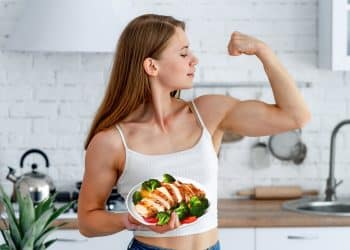The Protein Source
Parmesan cheese is largely made up of pre-digested due to its long aging. It takes just 45 minutes to digest, and you’ll get 138% of your RDA of bone-strengthening calcium, which is also vital for making your muscles contract.
The downside is the 19 grams of saturated fat. The advantage to using a high fat food source such as parmesan cheese during a restrictive diet is that even small amounts of fat can lead to a feeling of satisfaction. For those that do follow low-fat diets, parmesan can be a great addition to salads and sides.
A moderately sized 300-gram steak will provide your RDA of zinc, which aids in post-exercise tissue repair, and in the conversion of food to fuel. Beef is one of the richest natural sources of the strength booster creatine, which we all know is a great muscle-building aid. It’s not a good post-workout meal as it takes too long to digest, leaving your muscles waiting for protein.
The downside is that only 100 grams of steak will give you 30 percent of your daily cholesterol limit, so only eat it only once or twice a week if you have cholesterol problems. As mentioned above, steak can take a long time to digest, leaving you feeling full, so if you’re trying to lose weight its best to pair it with a low-calorie, nutrient-dense option like a salad to stave off weight gain. The enzymes in the salad will aid digestion and help you absorb more of the protein in the steak.
A few lamb chops will give your RDA of the energy producing vitamins niacin and vitamin-B12, which will help you, train longer. It’s also a good source of zinc and selenium, both of which are excellent for helping your muscles recover after training.
The downside is lamb chops are high in saturated fat at five grams per 100 grams, but has little fat inside the meat. Trimming the unwanted bits off before you cook them will significantly reduce the saturated fat content.
Level Up Your Fitness: Join our 💪 strong community in Fitness Volt Newsletter. Get daily inspiration, expert-backed workouts, nutrition tips, the latest in strength sports, and the support you need to reach your goals. Subscribe for free!
Cruciferous vegetables increase our body’s ability to detoxify the carcinogenic compounds that are produced when meat is grilled or fried the way lamb often is, and are best paired with lamb chops – especially if they are being grilled. This is always a great side to any meat dish.
One large chicken breast will give you your RDA of niacin which will help your body produce energy from all the foods you eat and keep both your nervous and digestive system healthy. It’s low in saturated fat at a gram per breast and is a good source of omega-3. This is why so many elite athletes favor chicken breasts as their ideal protein source. You can too if you’re trying to lose weight or gain lean muscle.
The downside is the intensively farmed and water-filled budget breasts. Organic chicken has 38 percent more omega-3 than the non-organic chicken. More expensive maybe, but when it comes to chicken breasts you get what you pay for.
Chicken soup impairs the release of mucus, which is the sticky stuff that can obstruct your airways when you train. If you cook a whole chicken and eat the breasts, the carcass can be used for the broth.
Two small pork fillets will provide your RDA of thiamine and a recent study found that high levels of this vitamin helped athletes recover from exercise faster. Pork is also a rich source of zinc which helps your body produce the muscle-building hormone testosterone.
The downside is a 100 gram of pork will give you 38 percent of your daily cholesterol allowance so limit it to a few times a week.
Pinto beans cut bad cholesterol by nine percent which will help off set the high cholesterol levels in the pork, and therefore make a good side option.
Happy Lifting!








